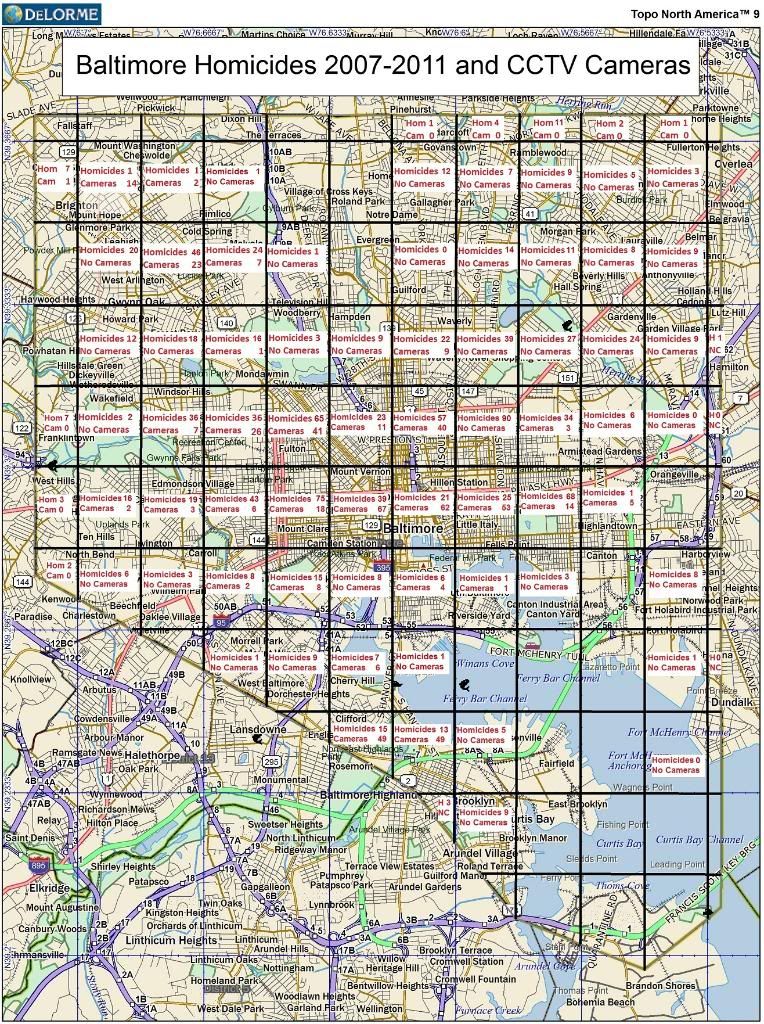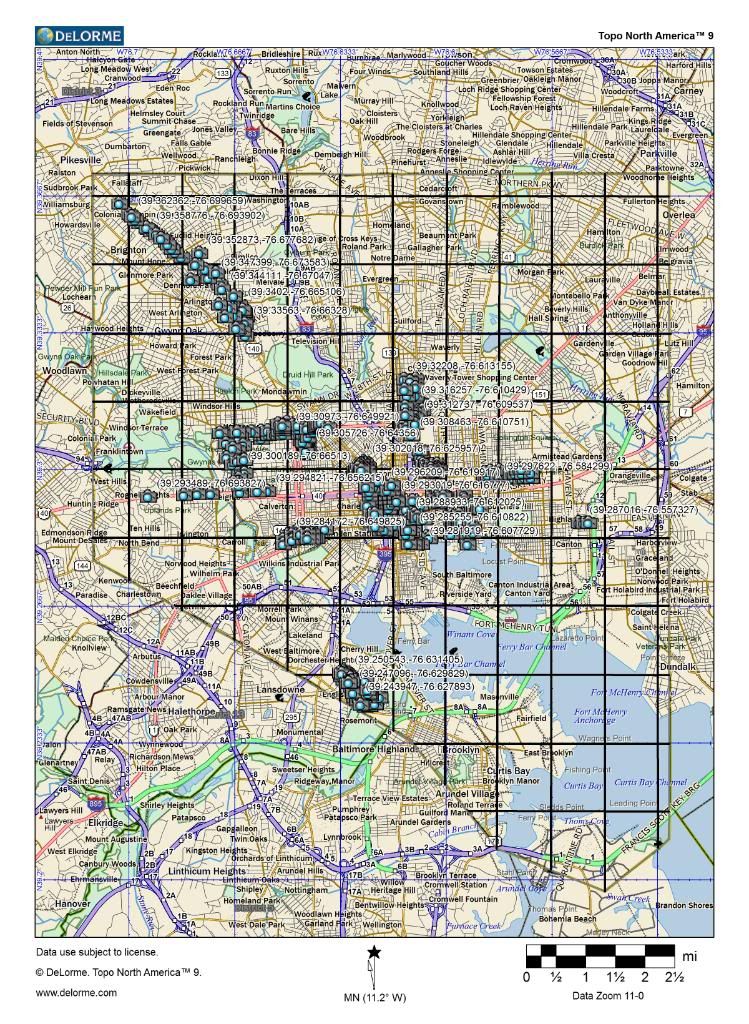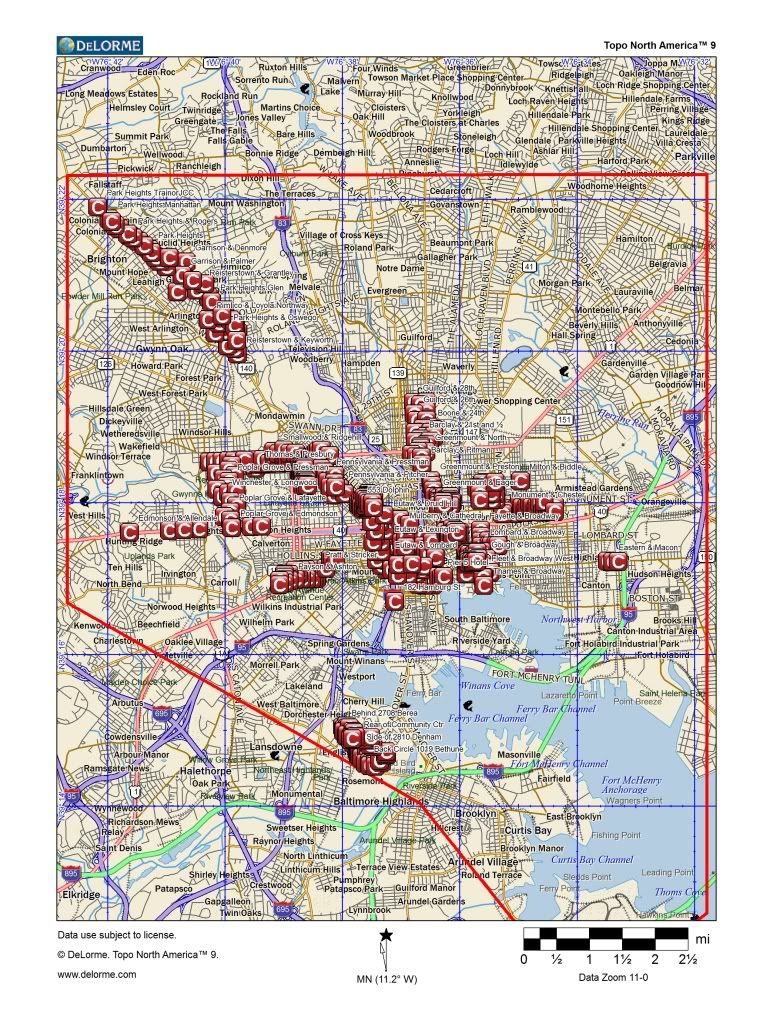The CCTV police camera programs was initiated in the mid-2000s, in the post-9/11 paranoia. The premise of the program was to enable the police department to reduce crime and expand exterior crime monitoring by installing surveillance video cameras on public streets. Initially, camera monitoring was performed by police officers nearby in a vehicle. Later, Baltimore City installed a monitoring center where police officers monitor the video to identify potential criminal activity or review footage from a criminal event.
Why are there so many cameras in locations with very little violent crime?
Concurrent to the city's installation of its CCTV cameras, the federal public housing program installed its own set of CCTV cameras in public housing neighborhoods. After a few short years the public housing surveillance program terminated, and the monitoring and maintenance of the public housing cameras was transferred to the Baltimore City Police Department. This is why there is a large concentration of CCTV cameras in Cherry Hill. Some communities also became enchanted with the CCTV program and opted to help pay for camera equipment. Cameras were installed but then the monitoring and maintenance of those cameras were transferred to the Baltimore City camera surveillance program. This is why there are 15 cameras along Reisterstown Road in the Reisterstown Station neighborhood though almost not violent crime.
Why are there very few police cameras in areas with the highest amount of violent crime?
In order for the police camera monitoring center to communicate with and retrieve data from the cameras the surveillance system requires fiber optic cable. Fiber optic cable has been installed in the downtown area as well as areas with large numbers of businesses but has not been installed in older residential communities. It is these older residential areas where most of the violent crime occurs. The dearth of fiber optic cable in high-crime neighborhoods was well known to the police department before they embarked on the installation of the CCTV surveillance system but the lack of infrastructure did not seem to impact the political decision to initiated the program.
The result is a police camera surveillance system that regardless of the quality of the cameras and the integrity and and experience of the police officers in the monitoring center, the Baltimore City police surveillance program will be limited in its ability to identify violent crime, make the city safer and prevent crime from occurring. The surveillance monitoring personnel are saddled with observing camera monitors of low-crime or no-crime neighborhoods and the citizens of Baltimore are responsible for paying for a highly ineffective police camera monitoring program.
1. Homicide Locations were garnered from the Baltimore Sun Homicide Map. There are 1173 homicide locations.
2. Closed Circuit TV Camera Locations were downloaded from the OpenBaltimore website. There are 475 CCTV cameras.

Below is a map showing the locations of the CCTV cameras in Baltimore.

Update 04/27/12 The OpenBaltimore site recently updated the database that listed the CCTV cameras. There are now 546 cameras. Upon inspection of the new data one may see there are now more cameras in Upton and a new set in the Middle East neighborhood. These neighborhoods do have considerable homicide rates and new camera implementations would make sense, but that still leaves the two neighborhoods with the highest homicide rates devoid of cameras, Broadway East and Harlem Park. Below is the updated map.

These other posts regarding Baltimore and Detroit homicides might be of interest:
Baltimore Homicide Statistics - Number of Homicides on Each Day of the Month of 2011
Baltimore Homicide Statistics - Gender Comparison of Victims
Baltimore Homicide Statistics - Method of Death
Comparison of Baltimore and Detroit Homicide Victims in Different Age Ranges
Detroit Homicide Statistics - Age Range Comparisons of Homicide Victims
Detroit Homicide Statistics - Gender Study of Homicide Victims
Detroit Homicide Statistics - Method of Death
Detroit Homicide Statistics-Number of Homicides on Each Day of the Month during the year 2010, Chart
No comments:
Post a Comment